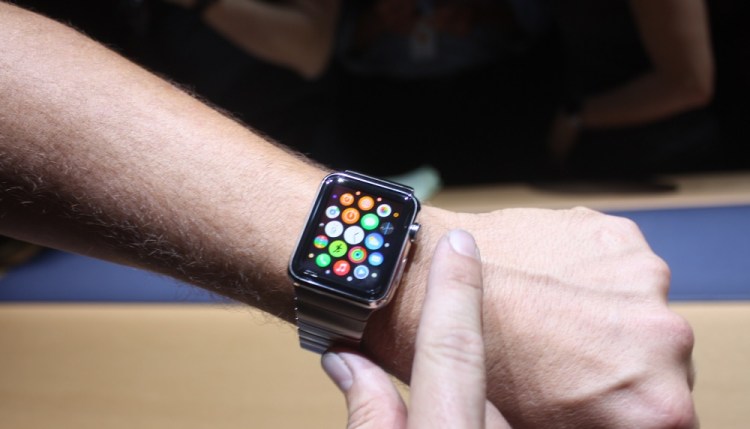It’s ugly. It’s beautiful. It doesn’t matter: The Apple Watch will sell millions in 2015 when it finally ships. More than 200 million people already own iPhones that are compatible.
The complaints of left-handers, Android-lovers, and devotees of the current swathe of smart watches won’t count for much once the device is out in the world. Tim Cook reiterated the strength of Apple’s approach during yesterday’s iPhone 6 and Apple Watch event: “A great product is not just a collection of features, it’s how it all works together. How it makes you feel…”
Apple, the enabler
The tidal wave of smart watches rushed to market to preempt the Apple watch have failed to fire people up not because they look bad, but because they lack a compelling reason to exist.
It remains to be seen whether the Apple Watch can offer that. The situation is similar to the early days of the MP3 player when limited functions made devices a niche proposition. Then came the iPod and Apple’s succinct selling point: “1,000 songs in your pocket.”
The iPhone arrived with a similarly simple pitch: “The Internet in your pocket.”
The comparison with the original iPod is apt given the Apple Watch’s interface relies heavily on what the company calls the Digital Crown. The smart knob is effectively the grandchild of the original Click Wheel, teamed with touch and taps.
Harnessing Siri also gives the Apple Watch a Dick Tracy-esque air, though I suspect most people will remain too embarrassed to use voice features in public.
QuickBoard, a function that automatically provides responses based on the content of messages you receive, is more likely to be useful — provided it works reliably.
Do we need a watch?
Though a lot has been made of the fashion hires Apple has made, the look of the Apple Watch will ultimately matter less than how it works and how it fits into people’s lives.
Traditional watches have declined in popularity because they’ve been pushed out by the very smartphones Apple’s recent success has rested upon. Jony Ive made typically bold claims about the Apple Watch’s design — “You can’t determine a boundary between the physical watch and the software” — and it’ll have a higher bar to reach. A device you wear requires a more intimate relationship than one you slip into your pocket.
The Apple Watch has to be a companion, not an irritant.
It’s easy to roll your eyes when Ive makes statements like: ““We have worked with horological experts around the world to help us understand the cultural significance of time keeping.”
Apple has a tendency to slip into hyperbolic parody during its events but it’s masterful at selling a story around its devices. In the lead up to the Apple Watch’s release next year it will make customers see how the device could have a place on their wrists and in their lives.
That’s the part its rivals have not yet mastered.
This story originally appeared on Tech City News. Copyright 2014
VentureBeat's mission is to be a digital town square for technical decision-makers to gain knowledge about transformative enterprise technology and transact. Learn More

